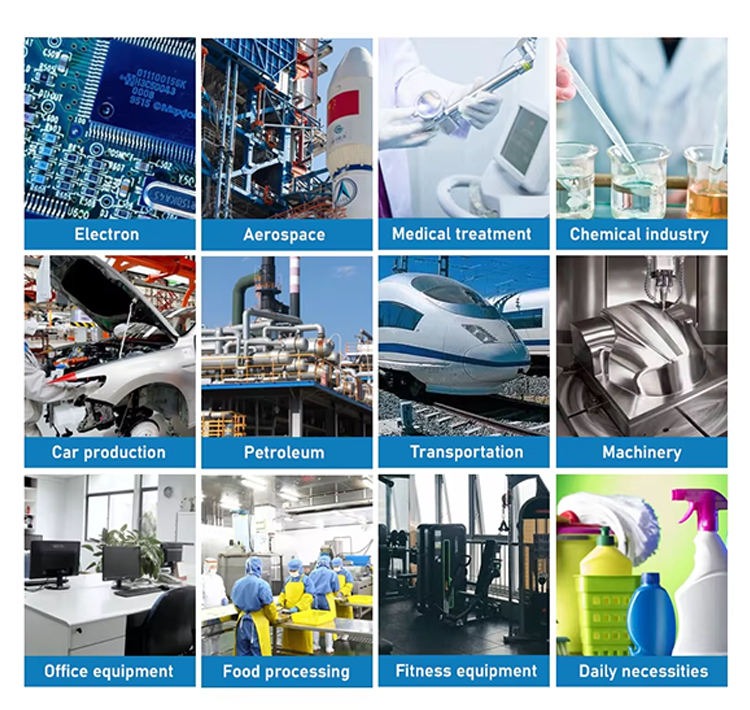Glass Fiber Reinforced Polymer (GFRP), commonly known as fiberglass, is a fiber-reinforced composite material made with synthetic resin as the binder matrix and glass fiber and its products as reinforcing materials. Here is a detailed introduction:
Composition
Glass Fiber: The main load-bearing material, characterized by high strength and lightweight, with outstanding performance. It improves the low-temperature impact resistance and stiffness of the composite material and reduces the low-temperature shrinkage of the polymer matrix. Common types of glass fiber include E-glass fiber and S-glass fiber. E-glass fiber has good electrical insulation and corrosion resistance and is the most commonly used; S-glass fiber has higher strength but is also relatively more expensive.
Synthetic Resin: Bonds the fibers together, protecting them. When the composite material is under load, the polymer matrix distributes stress evenly to the fibers through shear action, ensuring uniform stress on the fibers and imparting a certain degree of flexibility and chemical stability to the product. Commonly used synthetic resins include polyester resin, epoxy resin, and phenolic resin. Polyester resin has lower cost and better processability; epoxy resin has high bonding strength and good corrosion and heat resistance; phenolic resin has even higher heat resistance and flame retardancy.
Advantages
Lightweight and High Strength: With a relative density between 1.5 and 2.0, only 1/4 to 1/5 that of carbon steel, its tensile strength is close to or even exceeds that of carbon steel, comparable to high-grade alloy steel. It is widely used in aerospace, high-pressure vessels, and other products requiring weight reduction.
Good Corrosion Resistance: It has good resistance to atmosphere, water, and common concentrations of acids, alkalis, salts, and various oils and solvents. It has been widely used in various aspects of chemical corrosion protection and is replacing carbon steel, stainless steel, wood, and non-ferrous metals.
Good Electrical Properties: It is an excellent insulating material and can be used to manufacture insulators, maintaining good electrical insulation properties even at high frequencies. Excellent thermal properties: Low electrical conductivity, 1.25-1.67 KJ at room temperature, only 1/100-1/1000 that of metals, making it an excellent thermal insulation material. Under instantaneous ultra-high heat conditions, it is an ideal material for heat protection and ablation resistance.
Excellent processability: Molding processes can be selected according to the product's shape, and the process is simple, allowing for one-time molding and the manufacture of complex shapes.
Good designability: Materials can be fully selected to meet the product's performance and structural requirements. Different mechanical, physical, and chemical properties can be achieved by adjusting the glass fiber content, layup method, and resin type.
Disadvantages:
Low modulus of elasticity: Twice that of wood but ten times that of steel, resulting in insufficient rigidity in product structures and susceptibility to deformation. This is usually compensated for by using thin-shell structures, sandwich structures, or high-modulus fibers or reinforcing ribs.
Poor long-term temperature resistance: Generally, it cannot be used for extended periods at high temperatures. The strength of general-purpose polyester resin FRP decreases significantly above 50 degrees Celsius.
Aging phenomenon: Performance is easily degraded under the influence of ultraviolet radiation, wind, sand, rain, snow, chemical media, and mechanical stress.
Low interlaminar shear strength: Interlaminar shear strength is borne by the resin, hence it is relatively low. Interlaminar adhesion can be improved by selecting appropriate processes and using coupling agents. In product design, interlaminar shear stress should be avoided as much as possible.
Production process
Hand lay-up molding technology: A pressureless or low-pressure molding technology that uses room-temperature curing thermosetting resins such as unsaturated polyester and epoxy resins to bond glass fibers and their fabrics as reinforcements together. The main process involves alternately brushing or spraying a layer of resin liquid onto a mold coated with a release agent, then laying a layer of fiber reinforcement material, repeating this process until the product dimensions are achieved.
Spray molding technology: Developed from hand lay-up molding, this technology uses a spray gun to cut and disperse glass fibers, mixing the fibers with atomized resin in space. The mixture is then sprayed onto a mold, compacted with rollers, and cured to obtain the finished product.
Compression molding technology: The molding material is preheated and pre-formed, then placed into a preheated mold coated with a release agent. After pressing and demolding, the finished product is obtained.
Reaction injection molding technology: Liquid resin is metered and mixed and injected into a mold, where a chemical change occurs and the resin solidifies into a product of a specific shape.
Pultrusion molding technology: Continuous bundles or tapes of glass fibers impregnated with resin are molded through a die, cured in the mold or in a furnace, and continuously drawn into fiberglass profiles of unlimited length under the tension of a traction mechanism.
Applications
Construction industry: Used for structural reinforcement, formwork, wall panels, reinforced concrete, bridge decks, road surfaces, etc.
In the transportation sector: Fiberglass is used in automobiles for body shells, hardtops, sunroofs, headlight reflectors, front-end brackets, bumper frames, engine valve covers, intake manifolds, and other components. It is also widely used in high-speed train locomotives and interior trim. In the marine sector, fiberglass is widely applied in fishing boats, yachts, and sailboats.
In the industrial equipment sector: It can be used to manufacture various pultruded profiles and gratings, such as doors and windows, grating profiles, ladders, and cable trays. It can also be used to manufacture pipes and tanks, such as fiberglass FW process pipes, sand-filled pipes, and high-pressure pipes.
HUIWEN Professional Injection Plastic Parts,like Household appliances plastic parts, Automotive Plastic parts, agricultural tools plastic parts, medical equipment plastic parts, toys plastic parts, food bottles, boxes, buckets and so on




